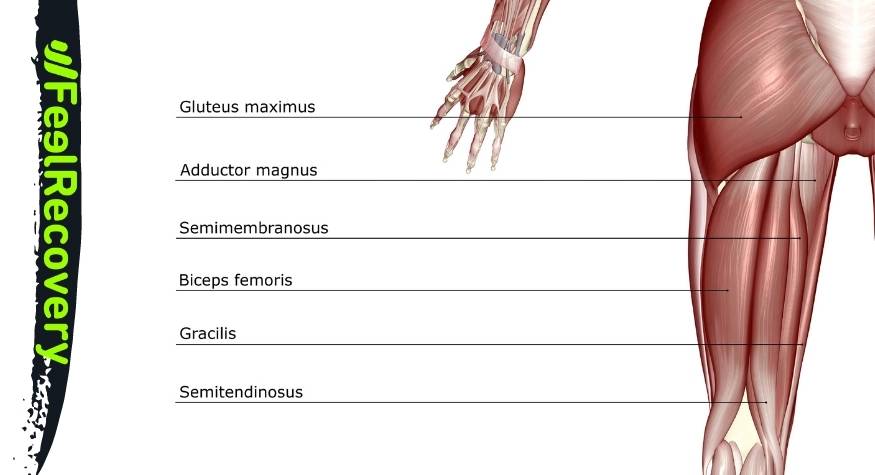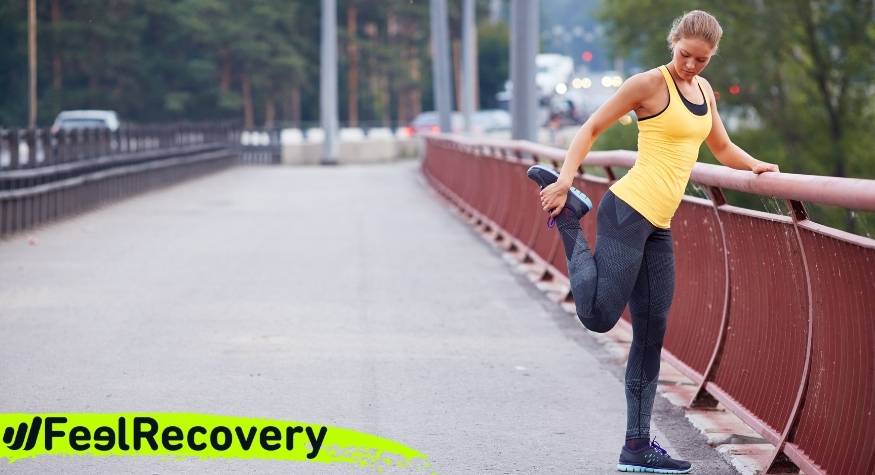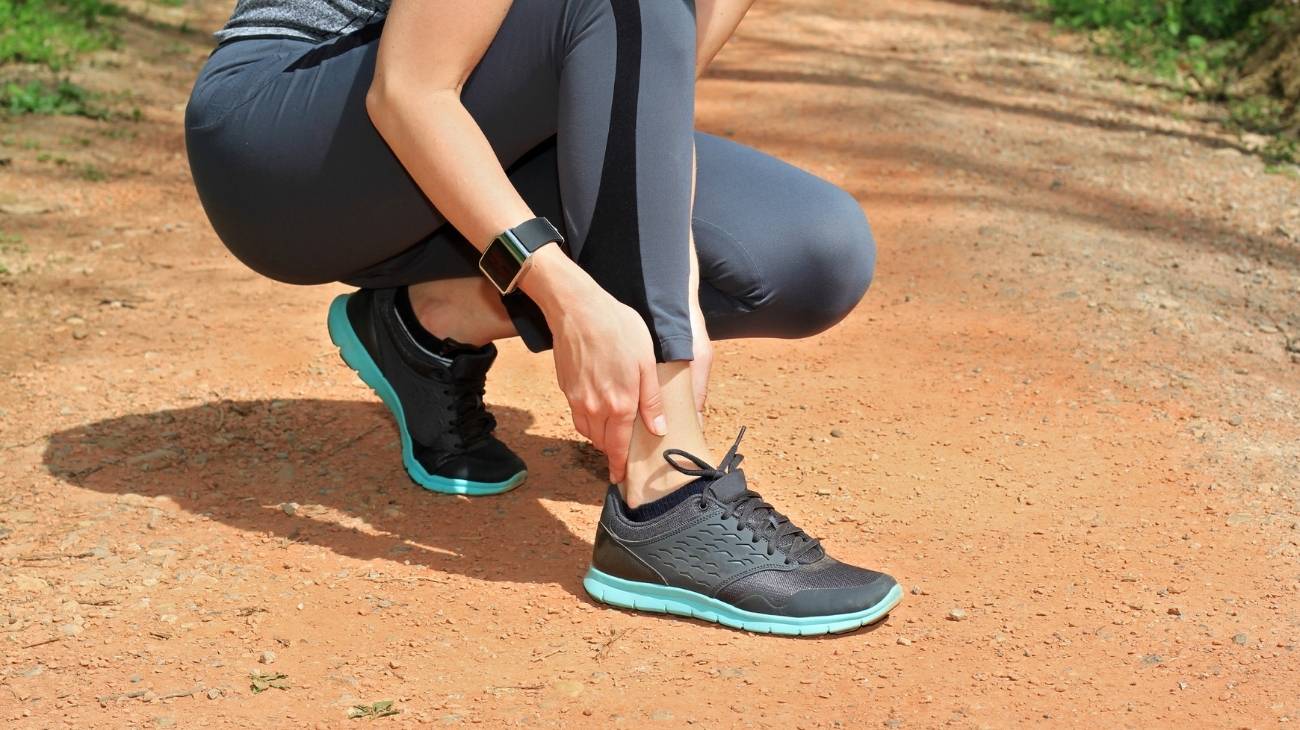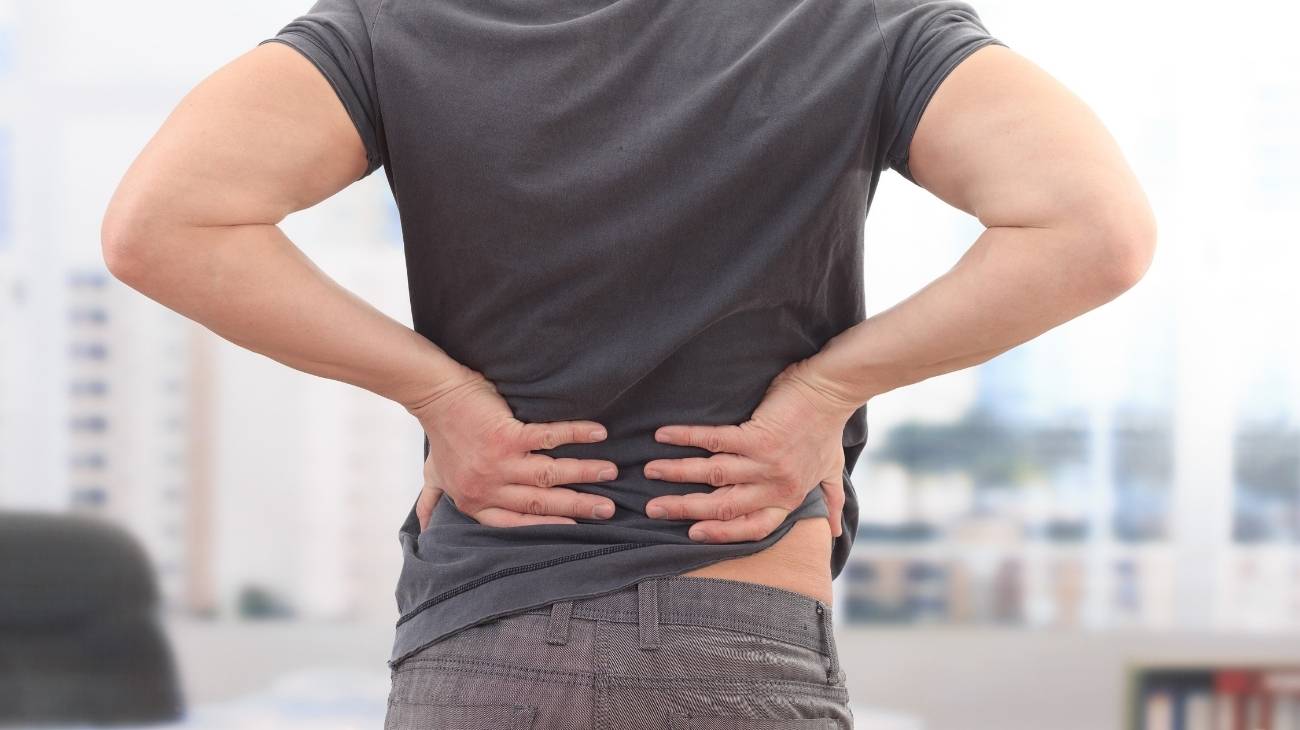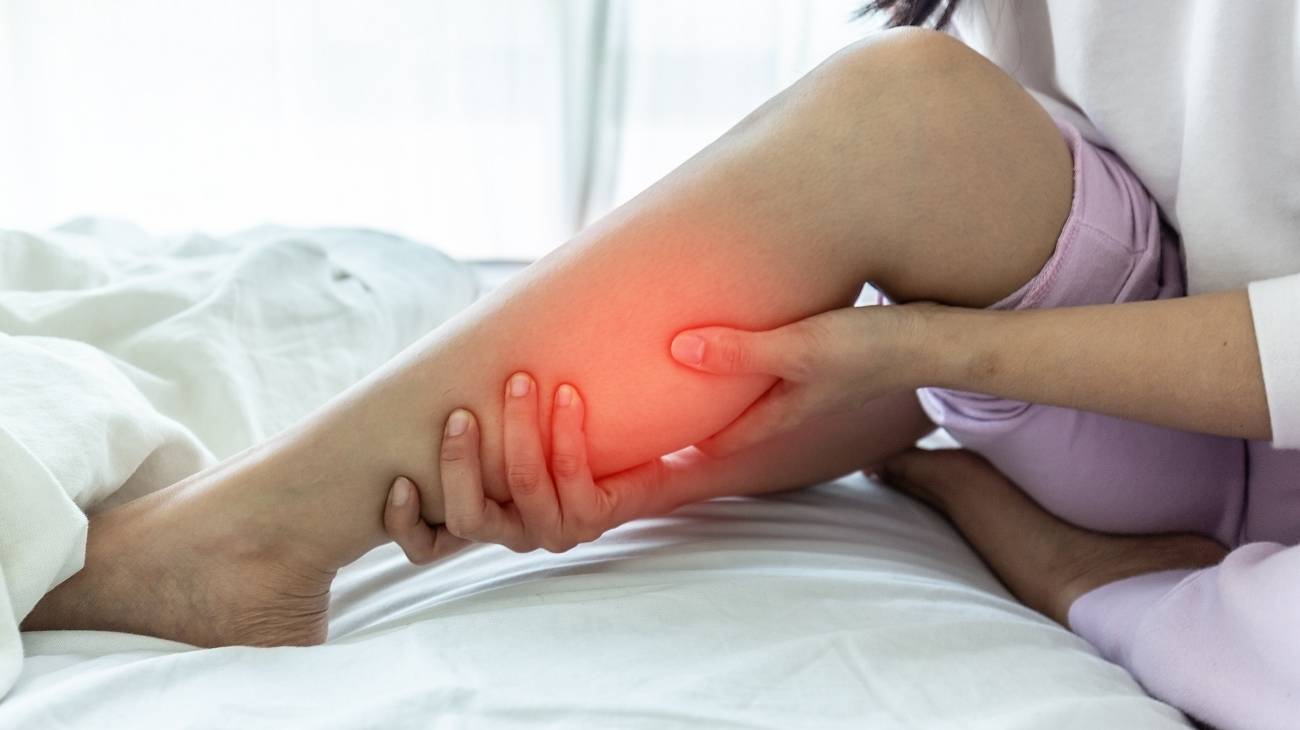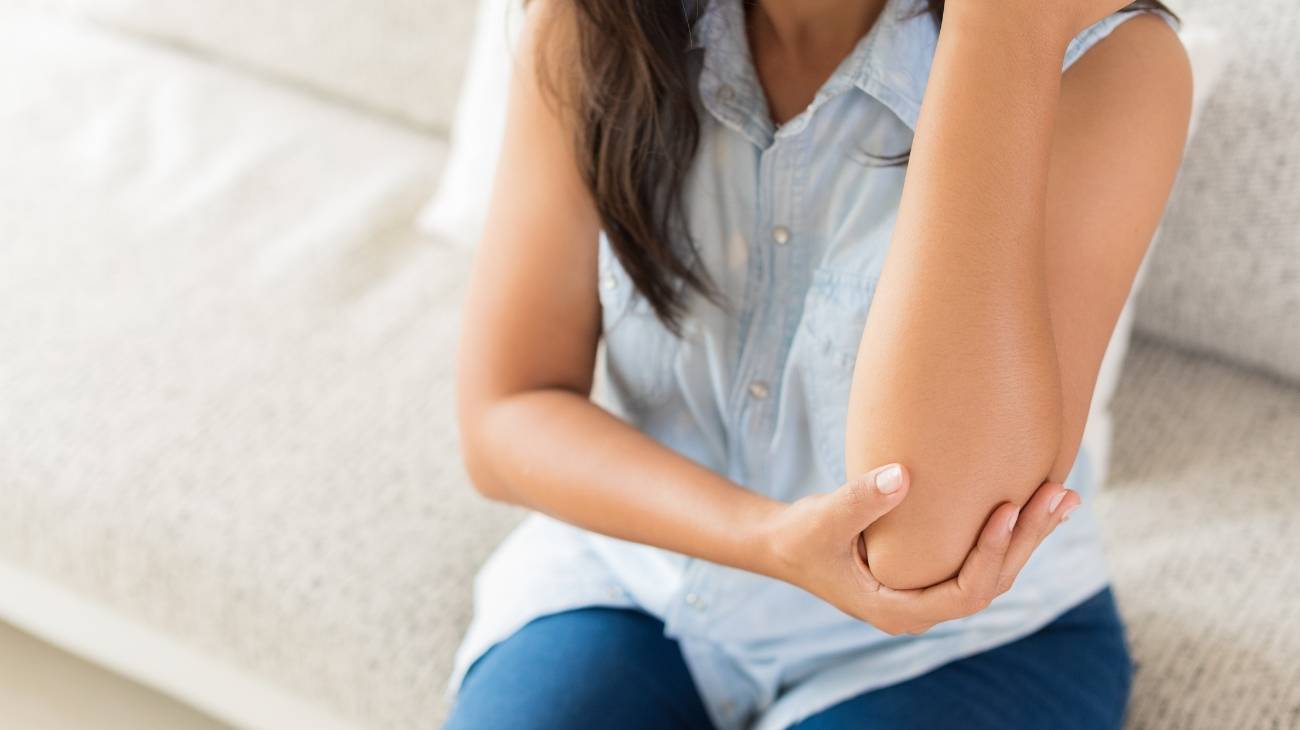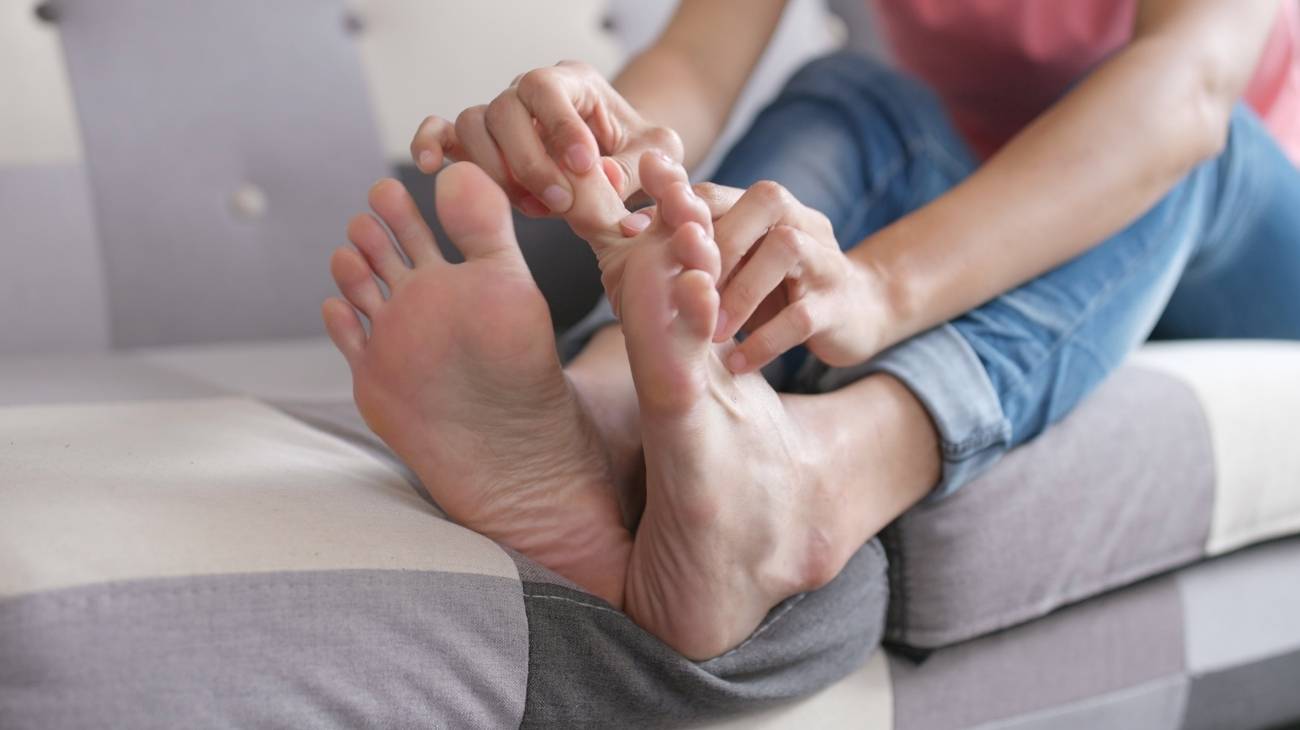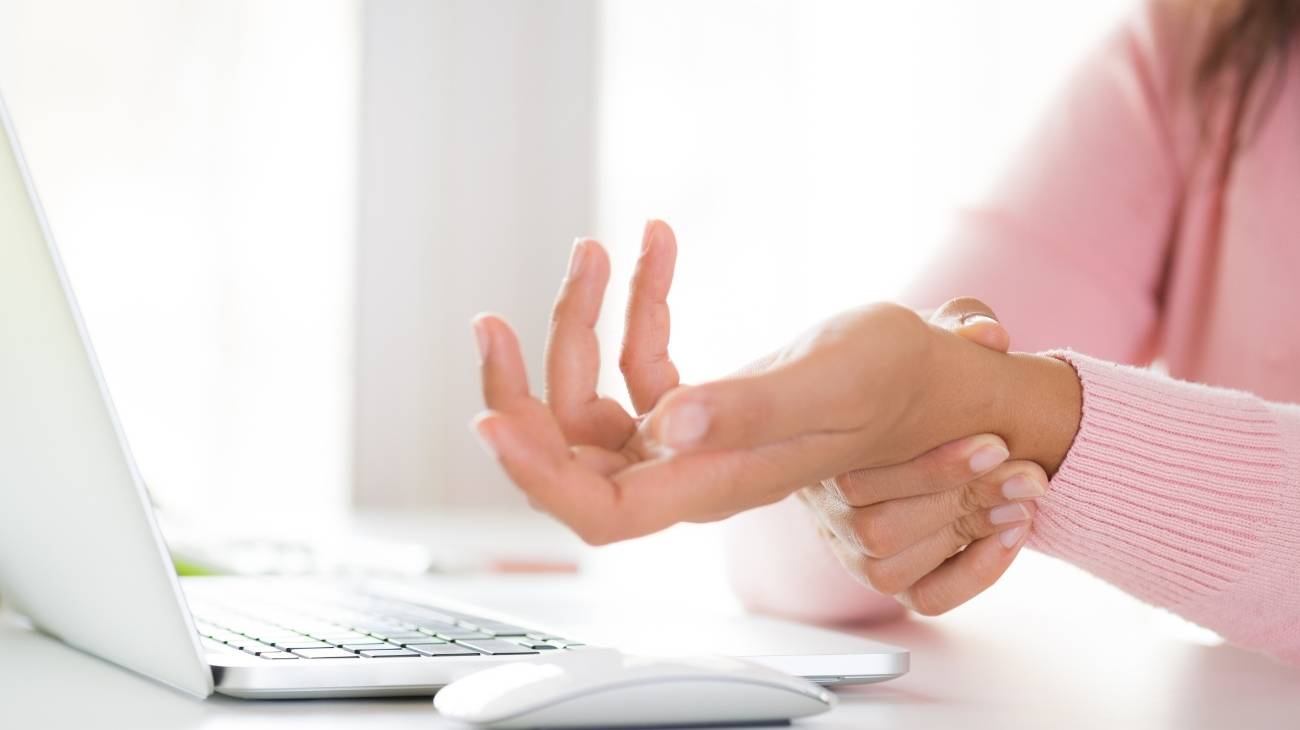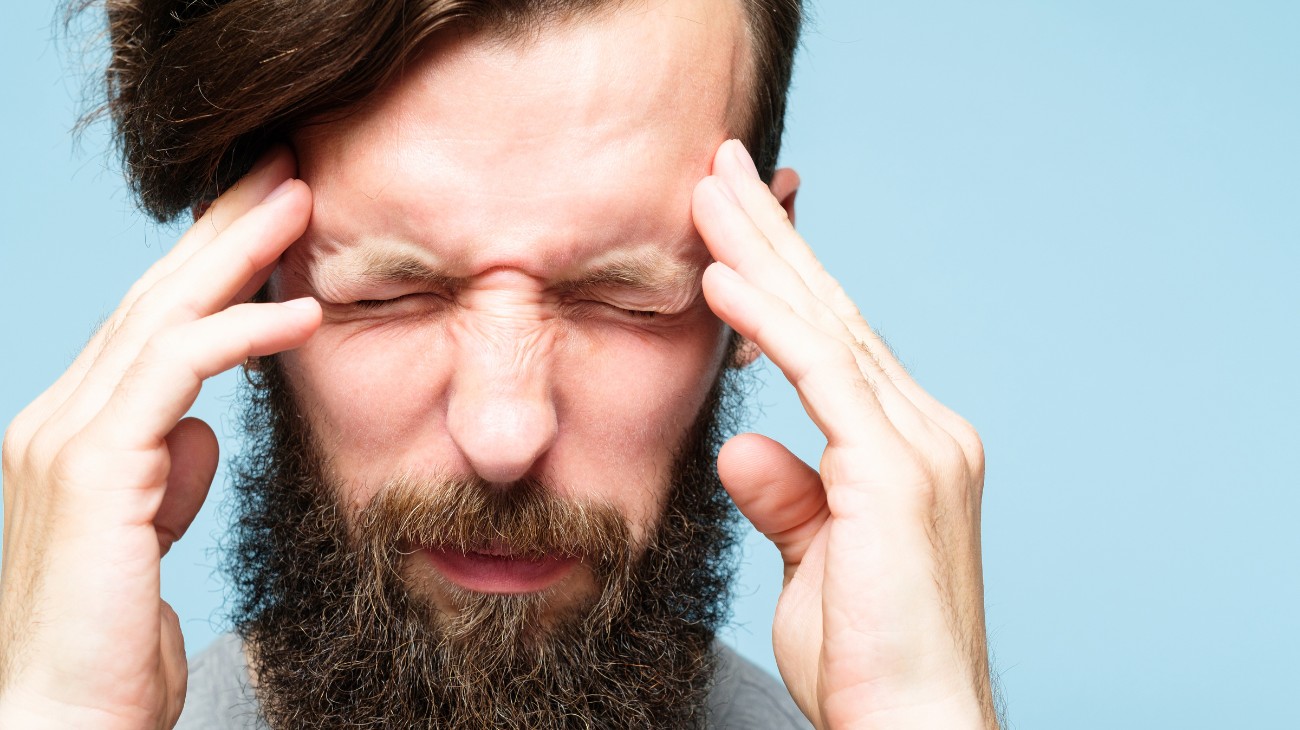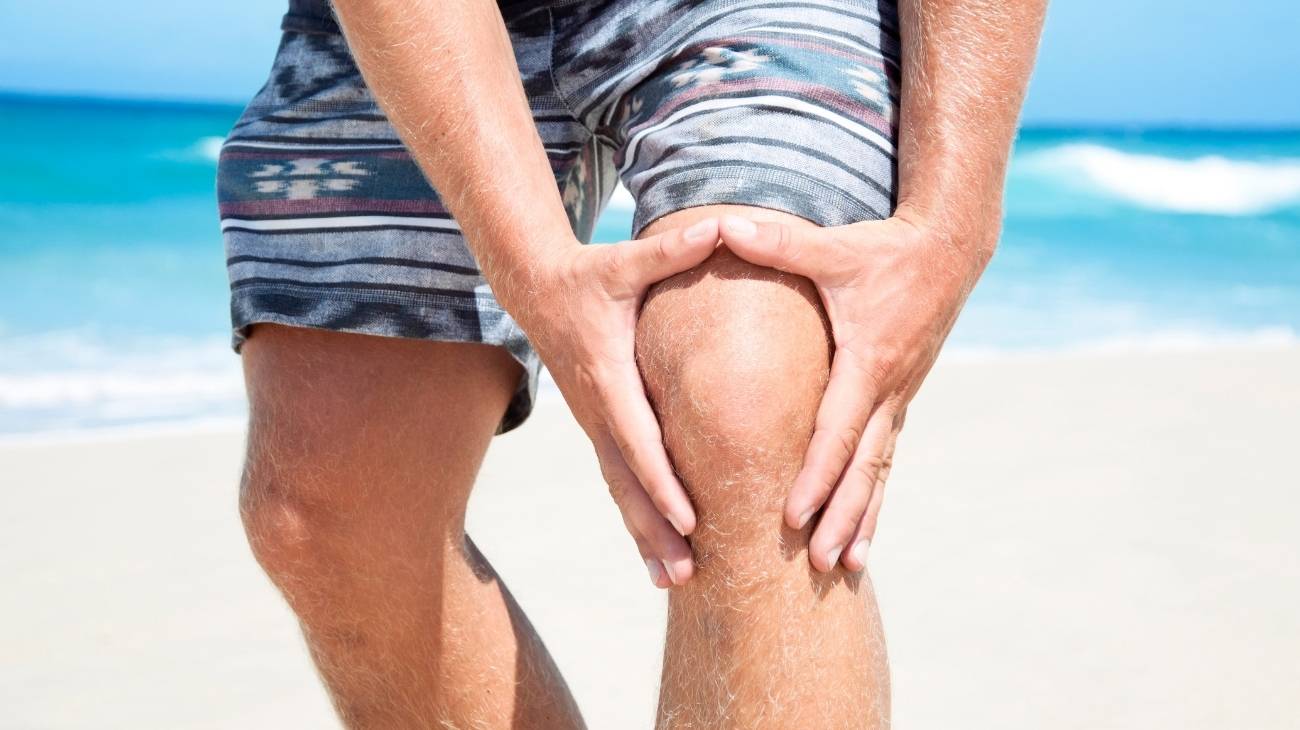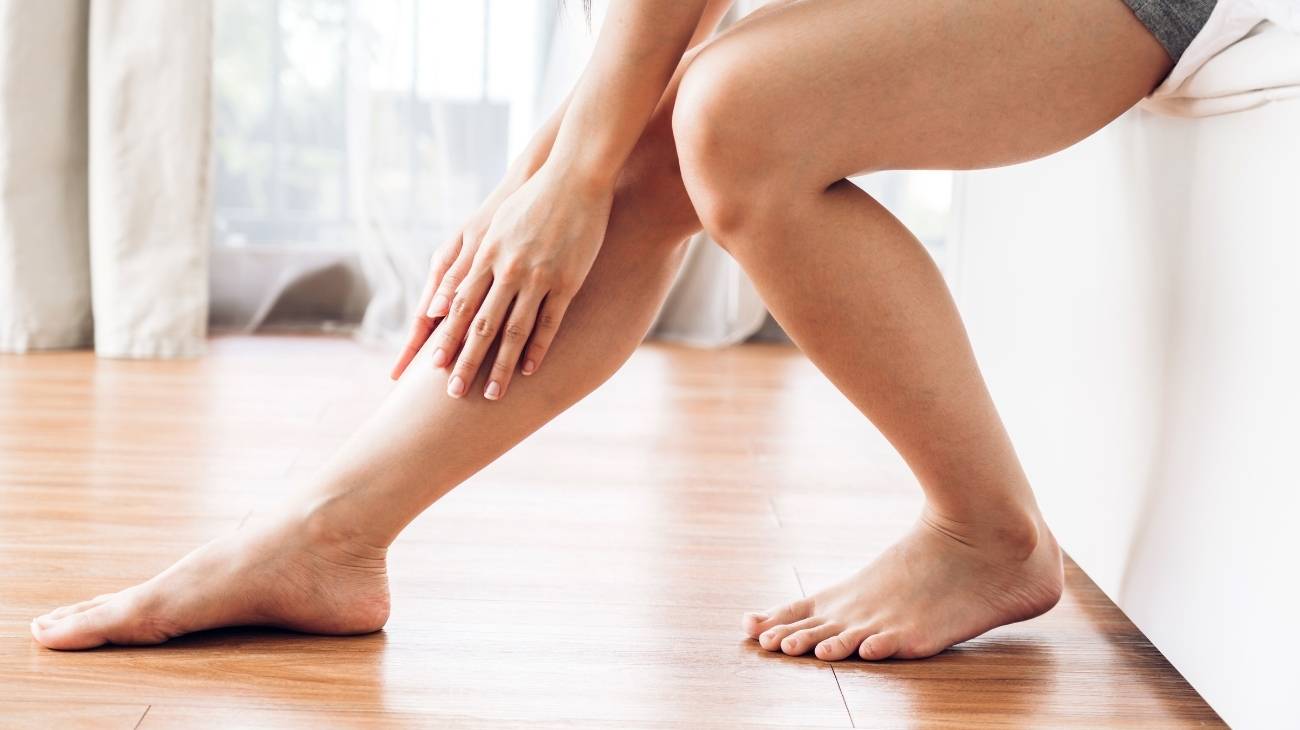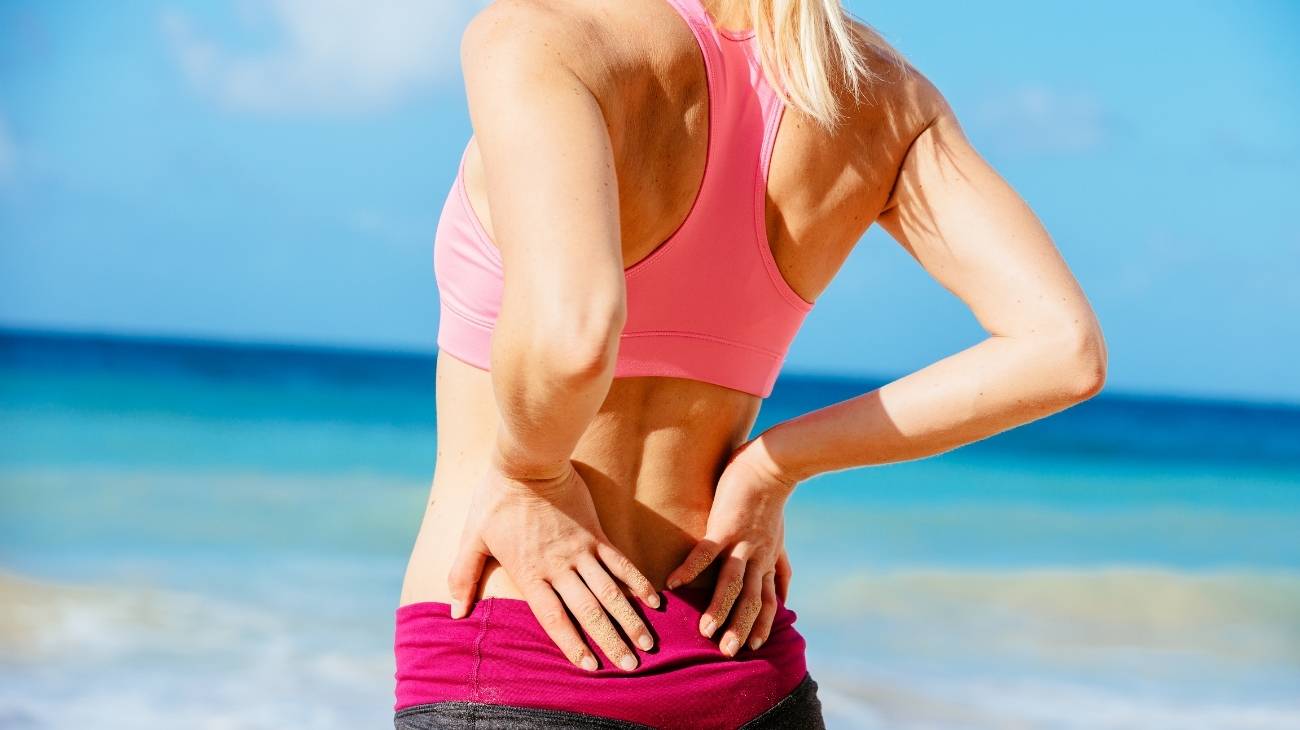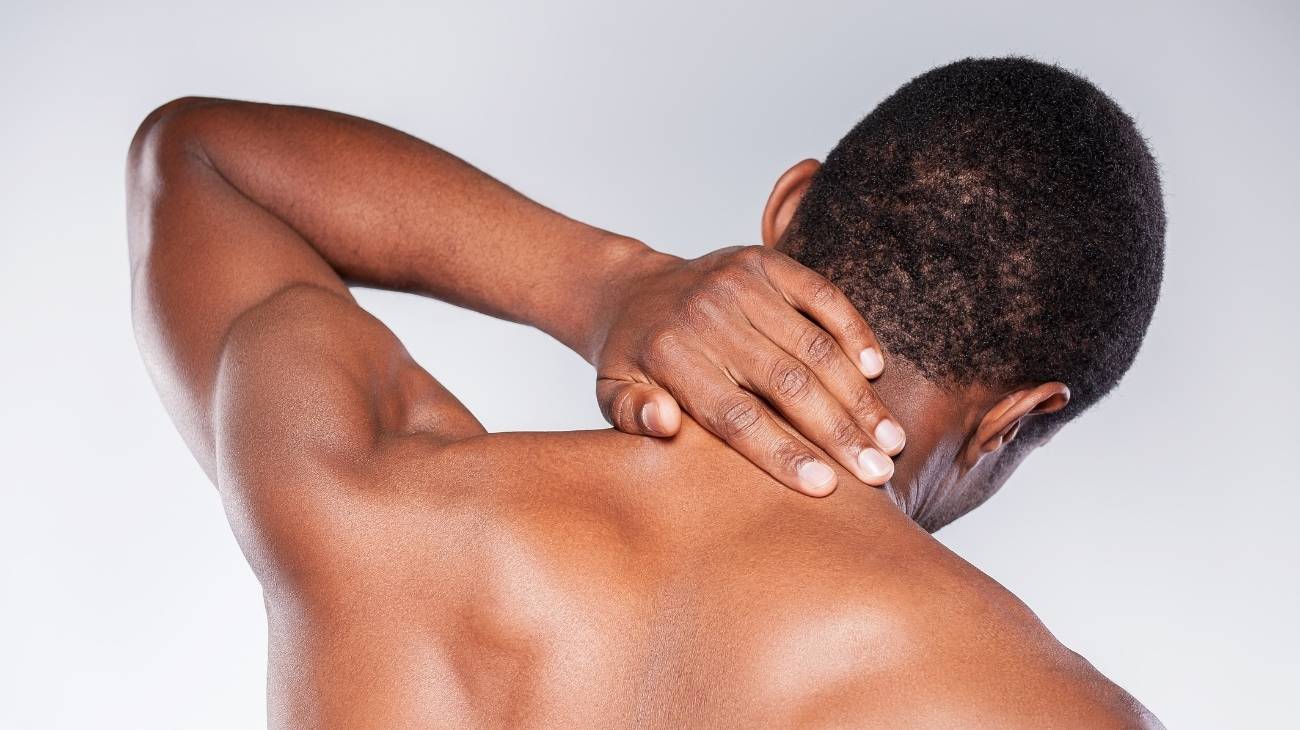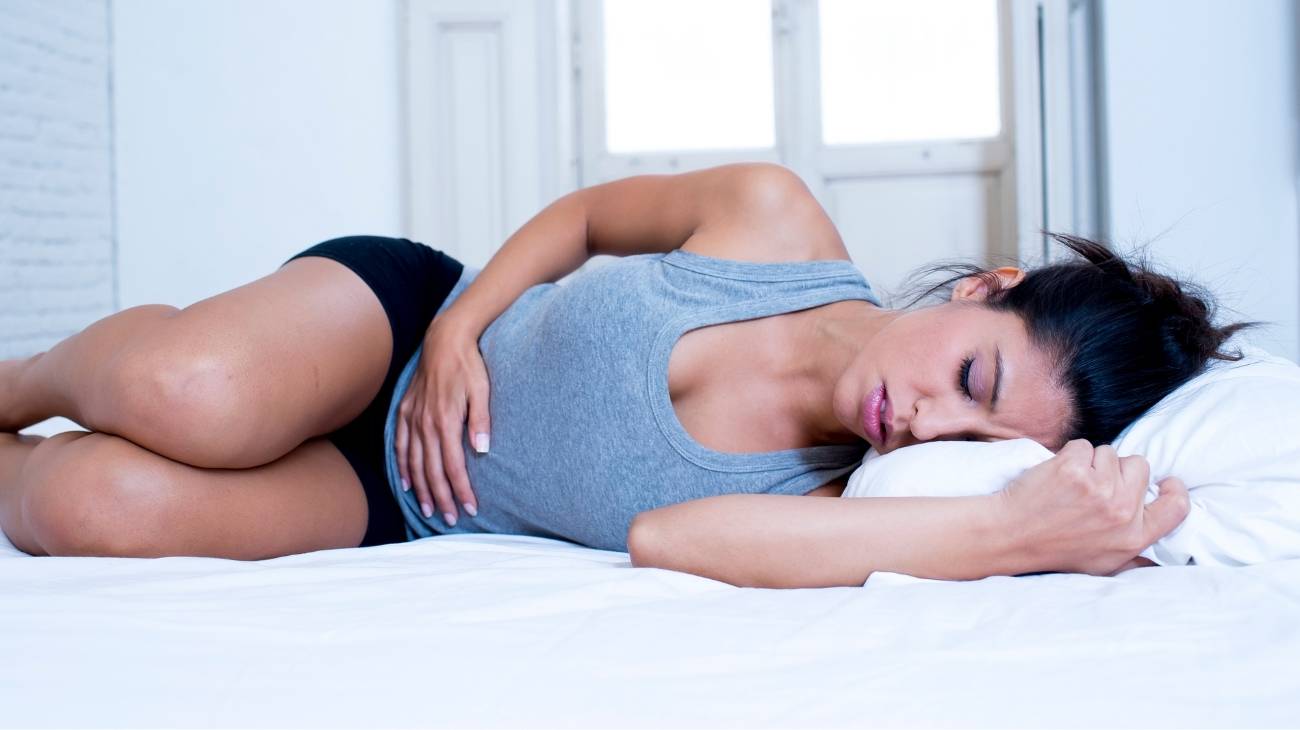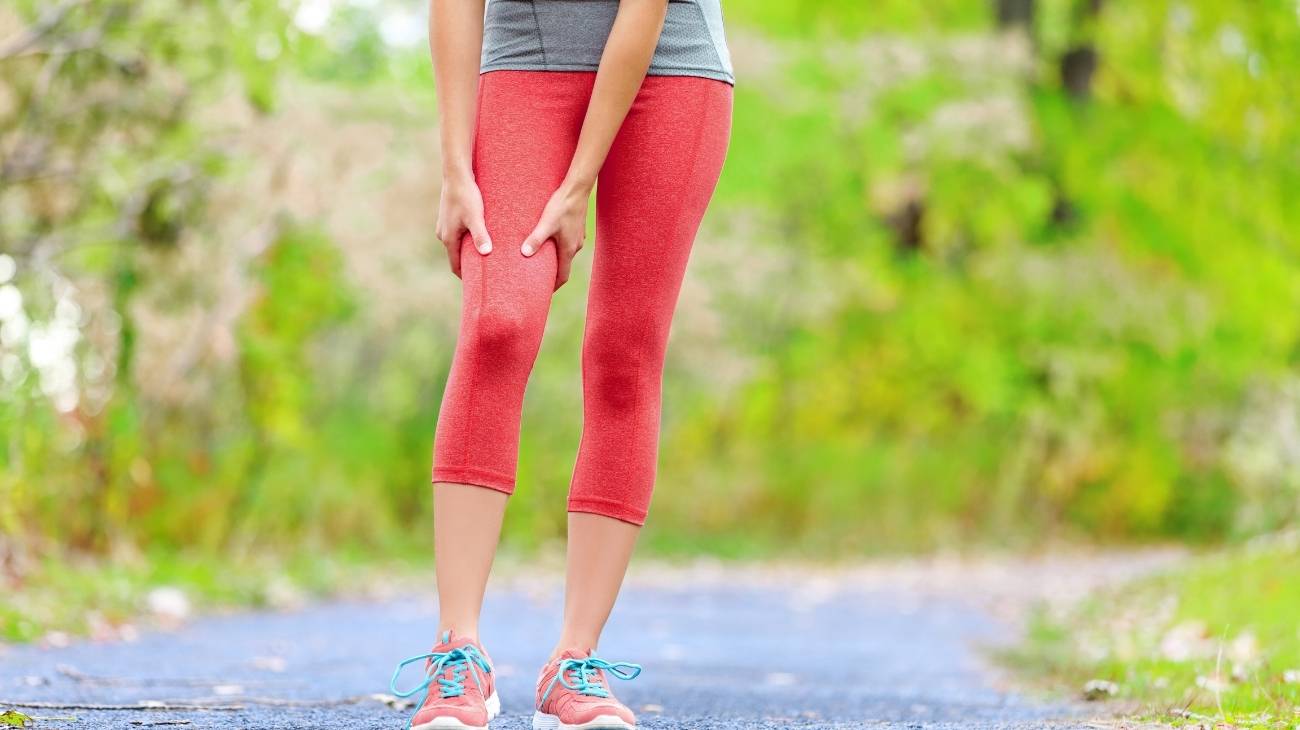- What is thigh and leg pain and how to identify it?
- Best products to relieve thigh pain
- What causes muscular pain in the thighs and what are the causes of it?
- What kind of diseases and ailments can cause thigh pain?
- What are the symptoms and types of pain that make us think we have a thigh injury?
- How can we relieve thigh pain through complementary and non-invasive therapies?
- How to apply the RICE therapy step by step to reduce thigh and leg pain?
- How can you prevent future thigh pain?
- Why should we avoid pills and injections to relieve leg and thigh pain?
Want to know how to relieve thigh pain? Don't know how to get rid of hamstring pain? Damage to the quadriceps prevents you from living a normal life? Don't worry, here you will find the solution.
Find out how you can identify a thigh injury and its type, what causes thigh pain, what are the most effective therapies and what are the top tips to reduce the discomfort until it disappears.
What is thigh and leg pain and how to identify it?
Our thigh is mainly divided into two parts, the front, where we have a large muscle, the quadriceps (there are really four but only one is considered), and the back, where there is a set of muscles called the hamstring. Although in many cases identifying thigh and leg pain will be identical, there are some differences to note.
Any trauma will produce pain of varying intensity. In this area, swelling and other symptoms do not appear as easily as, for example, in a joint or in the calf muscles. However, we can easily detect whether we have a simple blow or something more serious.
In any case, pain is a symptom of a problem, temporary or chronic, mild, moderate or severe, with or without cure, pathology or disease, but we will see all the possible causes throughout the post.
Pain in the front part (Quadriceps)
In general, it is a progressive pain due to repetitive movements (poorly performed or due to abuse of activity). Because the area is covered by a single main muscle group, when it suffers, we will notice the damage to its full extent, i.e. the entire front of the thigh. Pain increases with contraction and stretching.
It is very common to feel a sensation of being "stoned", which is uncharacteristic of many other damaged muscles. In addition, when we feel this pain it is also very difficult to continue walking or even to stand, as the quadriceps' responsibility for these mobility functions is very high and it needs to be in optimal condition.
Pain in the back (femoral or hamstring)
In addition to the conventional discomfort that we all know as "pain", in the back of the thigh you may notice prickling, very sharp and focused pains, in fact, there may even be nerve damage. Tingling or even numbness of the skin or leg may be normal in such a case.
It may also be the case that, in contrast to the front area, you do not have pain along the entire length of the back of the thigh, but rather in a more specific area. This is because the hamstrings are a set of three muscles. You can suffer an injury to one of the 3 muscles, while the others remain intact and pain-free.
Let's not forget that trigger points in the gluteus and lumbar make the pain in these areas radiate downwards. This will mean that we will notice a milder sensation but that we cannot relate it to any problem in the thighs or to diseases that produce direct pain in them as it will come from the lumbar area and the gluteus.
Best products to relieve thigh pain
Bestseller
-
Microwave Wheat Bag for Back Pain Relief (Extra Large) (Hearts)
£24,95 -
Microwave Wheat Bag for Back Pain Relief (Extra Large) (Oxford)
£24,95 -
Microwave Wheat Bag for Back Pain Relief (Extra Large) (Sport)
£24,95 -
Microwaveable Wheat Bag for Pain Relief (Hearts)
£20,95 -
Microwaveable Wheat Bag for Pain Relief (Oxford)
£20,95 -
Microwaveable Wheat Bag for Pain Relief (Sport)
£20,95 -
Wheat Bag for Microwave Classic Bottle Shaped (Hearts)
£20,95 -
Wheat Bag for Microwave Classic Bottle Shaped (Oxford)
£20,95 -
Wheat Bag for Microwave Classic Bottle Shaped (Sport)
£20,95
-
2 Thigh Compression Sleeve (Black/Gray)
£20,95 -
2 Thigh Compression Sleeve (Green/Navy)
£20,95 -
2 Thigh Compression Sleeve (Pink/Bordeaux)
£20,95 -
Ice Massage Roller Ball (Black)
£34,95 -
Ice Massage Roller Ball (Green)
£34,95 -
Ice Massage Roller Ball (Pink)
£34,95 -
Soft Density Foam Roller for Recovery (Black)
£34,95 -
Soft Density Foam Roller for Recovery (Green)
£34,95 -
Soft Density Foam Roller for Recovery (Pink)
£34,95
What causes muscular pain in the thighs and what are the causes of it?
Knowing what your pain is like at one time or another can help you to determine what type of injury you are suffering from, or if there is a more hidden problem such as an illness, a bad cure, etc.
Trauma, blows and falls
Blows, whether from falling, colliding with something, practising a sporting activity or receiving an impact, cause direct and immediate pain in the area. The thighs, like the rest of the soft tissue, are prone to bruising, so it is very common for a blow to be accompanied by bruising of the skin. In general, the trauma will not be too deep because the thigh area, due to its shape, helps to spread the impact.
When doing deep squats
Of course, the squat is one of the most popular exercises for strengthening the legs (and buttocks). This means that improper technique can be counterproductive. We should also point out that there is such a thing as a deep squat, the type of squat where your legs pass parallel to the ground and go lower.
By doing this exercise and creating angles between 90 and 135 degrees of flexion, we are stretching the tissues of the thighs much more than we are used to. As with any excessive stretching, the muscles overexert themselves which will result in pain. In many cases, this pain is caused by a large amount of stiffness, as squats recruit a large number of muscle fibres and when high intensity is demanded, many fibrillar micro-tears are produced causing pain and discomfort.
Running
One of the most typical injuries that occur in runners is a hamstring rupture. Obviously, the more severe the injury, the more pain you will feel. If it is mild, you will only feel pain when you start running (and also if you do other exercises where the thigh is involved). The same applies to the quadriceps. There are other pathologies that have thigh pain as a secondary symptom, and which are also typical of runners.
We know that the hamstring muscles are, in general, weaker than the quadriceps, so when we do sprints, hill runs, or some exercises in which we are not prepared to withstand the intensity, the back of the thigh is more prone to injury. It is therefore recommended to perform compensatory exercises to strengthen these muscles to prevent injury.
Warming up properly before going for a run, wearing specific footwear and training progressively are attitudes that will prevent this type of thigh injury from appearing. Finishing our training with a good stretching session and having a balanced diet and good hydration are essential for good health.
Pain at rest
Although it is not common, there are circumstances that can cause your thighs to ache even when you are not moving. An example of this is a condition known as peripheral arterial disease of the legs. The same applies to other disorders of the blood flow and the nervous system.
From intense exercise and exertion
A very high intensity, for which our body is not prepared, will cause pain due to overexertion in any area of our body, including the thighs, knees or legs in general. Sometimes, even the best trained athletes who train daily and have expert body care advisors can do a bad job and tissue damage can occur.
If this is the case, you should stop the activity in question, rest more or less depending on the severity (the intensity of pain and other symptoms will let you know), use cold on the injured area, compress the area for strains and apply the appropriate massage depending on how the tissues are doing.
Pregnant or overweight
Weight gain does not directly affect the thighs as a cause of damage. What happens is that there is no direct pain. We suffer from what is known as tired legs, which causes us to become exhausted in a very short time and any movement involves a greater effort. We also notice tingling and even itching in the thighs.
Although it is more evident in the feet and knees, bearing more weight than is considered ideal for the thigh will also cause us to feel discomfort in this area, although, in the same way, it is not something that we are going to notice very intensely, but rather that the discomfort will be generalised.
Stress and emotional causes
Stress and negative emotions cause muscle tension. However, the thighs are not an area particularly affected by this, especially if the muscles are not very well exercised.
In any case, if you suffer from a stress contracture in the thigh, which often also accompanies the buttock, you just need to relax it. Applying heat, getting a deep tissue massage and doing some exercises to stretch the long muscles of the whole leg are therapies that can help you recover better.
What kind of diseases and ailments can cause thigh pain?
Certainly, this is not an area where many pathologies occur, so making a correct diagnosis is not very difficult. Even so, it is true that there are all kinds of illnesses and circumstances that we must be aware of and differentiate.
Muscle contractures
The contracture of any muscle that makes up the hamstring or quadriceps group means that it has to make a greater effort than it is prepared to make to carry out its functions, which results in exhaustion and pain. In addition, it is more difficult for blood to reach the area, so oxygenation is reduced and its waste products are not released.
Contractures also appear as a defence mechanism, for example, in the event of a tear or rupture, so we are suffering a double painful effect, that of the tear itself and that of the muscle contraction. You will feel pain, stiffness, tightness, tightness, functional impossibility, limping, difficulty flexing the knee, etc.
Massage is the main treatment, accompanied by the application of cold for the first few days after the injury and heat during the following period and until recovery. We will also begin with a series of stretching exercises to restore the shape of the tissues and help them settle into place, reducing tension.
Muscle rupture
A hamstring tear, on a large or small scale, will cause considerable pain in the thigh. The best that can happen is that it is a minor problem and we only feel a pull that causes stiffness for a few minutes.
The bigger the tear, the more pain and other symptoms such as swelling or bruising. You will need rest and cold and, if the tear is total, surgery will be the most convenient option, as well as a personalised post-surgical treatment focused on recovering the morphology of the muscles and their capacity.
Something similar happens in the case of a quadriceps tear, which involves everything from unfocused pain to the impossibility of walking, as well as bruising, a stony sensation and increased pain when contracting and stretching the quadriceps.
Muscle strain
This is the excessive lengthening of all or part of the tendon structure of muscles, in this case the hamstring, quadriceps or abductor muscles. This is, as in many other cases, an overstretching of the tissues.
It feels like a tear, although this is not the case. This is followed immediately by a sharp pain of varying intensity. If the muscle becomes inflamed, the pain will increase at the same time. It is possible, but not visible, that there is internal bleeding; you will feel stiffness and tightness.
A physiotherapist will perform stretching and range-of-motion exercises as well as preventive exercises and massages. You can also reduce pain at home by means of temperature therapies (cold and heat) at home. A specialised doctor can prescribe ultrasound sessions or other effective alternative therapies.
Muscle cramps
Muscle cramps are usually not serious and are suffered during exercise or after a session, although it is also common to suffer from muscle cramps while sleeping. It is a muscle pull that involves sudden, intense pain, most noticeable when you try to stretch the muscle and when you touch it. It is usually brief, but if it is not, you will feel tingling in and around the muscle.
A diet rich in minerals, better hydration, adequate stretching, a massage to relax the muscle and the application of cold only if, after a few hours, the cramping pain has not subsided, will be enough to reduce the symptoms. If cramps are long-lasting, repeated or for no apparent reason, consult your doctor, as you may be suffering from a kidney ailment or have a nutrient absorption problem.
Bone fractures
Fracture of the femur can occur in an accident or if we suffer severe trauma. Surgery is usually required for this type of injury to restore the shape of the bone. Recovery is very long and painful and includes physiotherapy sessions at different levels, always considering the indications of the orthopaedic surgeon.
The pain is caused not only by the fracture itself, but also by the fact that the bone digs into the tissues, injuring and tearing them. In this case, treatment and recovery will take longer. A fractured kneecap can also cause pain in the thigh, although in a much weaker way than in the previous case.
Tendonitis
A tendon becomes irritated and inflamed, making it tender and causing moderate damage. Although it is much more common in other areas, it is also suffered in the thigh, especially involving the abductor muscles. It is a condition inherent to repetitive movements and activities. It is fairly easy to get back to normal after suffering from tendonitis. You need rest, massage, muscle strengthening exercises and non-invasive pain treatment.
Meralgia paresthetica
This condition occurs when the lateral nerve in the thigh is compressed, which means the area hurts and you feel a burning sensation, as well as a loss of sensation. The pain increases if you stand for a long time, either standing or walking.
Treatment consists of symptomatic relief, trying to reduce the inflammation and eliminate the damage. The physiotherapist will recommend simple stretches and massages will be ideal to relax the area and allow the tissues to relax.
Sciatica
Sciatica is the pain that appears in the lower back and reaches down to the foot due to inflammation of the sciatic nerve. This nerve becomes inflamed and causes pain in the thigh, especially in the back area and towards the outer side. The skin can become very sensitive and your leg may even fall asleep. With rest, simple physiotherapy exercises and non-invasive pain therapies there should be no problem, although it is true that this pathology is disabling if it occurs moderately or severely.
Lipedema
Fatty tissue is distributed and accumulates in the upper legs, including the hips and thighs. It is related to hormones in the case of women and to liver problems in men.
When we suffer from lipedema, bruising, spider veins (in advanced stages, blood flow is greatly altered), heaviness and swelling appear, and there is pain to the touch and, of course, to pressure, making it difficult to wear tight clothing. The morphology of the leg changes, becoming tubular in shape, modifying the way we walk and limiting our mobility.
In the early stages, it is treated with proper nutrition and physical activity, and it helps to wear compression garments during exercise to prevent the tissues from sagging and inflammation. Water sports have a major positive effect on the disease.
In more advanced cases, compression therapy at a higher level will be essential, with circular or flat knitting used on a daily basis, sewn garments if the pathology is already well developed, being very useful. With greater severity, complex decongestion, including drainage and subsequent maintenance, will be necessary.
Iliotibial band syndrome
An injury suffered by runners that consists of pain in the outer side of the knee, which is acute and of great intensity. In addition, pain can also occur in areas such as the hip and thigh. It is more evident when running downhill or at low speed.
We can treat the inflammation with cryotherapy, but it is also advisable to see a physiotherapist to help you get back to normal. For the thighs, massages will be a great relief. In sport, you should watch your running routes and change or improve your running technique. You should also build an exercise plan to strengthen your lower body.
Peripheral arterial disease
As the arteries in the legs narrow and become stiff, they do not allow proper blood supply, damaging tissues, including nerves. It is mainly caused by the accumulation of fat in the arterial walls, so its prevention and treatment begins with a change in our diet.
The pain, together with fatigue or burning, appears when we are making the muscles work harder than usual, for example, doing sport, climbing stairs, lifting and releasing weights, etc. The muscles do not receive the blood they need for these activities and are deprived of oxygen. In more advanced stages ulcers appear and the skin may become bluish or generally darker.
Its treatment requires all kinds of actions that help to widen and free the arteries of lipids (stop smoking, reduce cholesterol, lose weight, maintain blood pressure and blood sugar levels, etc.). Choose an exercise programme with a balance of exercise and rest. Get massage to keep the tissues active if you are at rest or feel weak thighs.
Myositis ossificans
This is the formation of bone within a muscle and occurs mainly in the quadriceps and adductor internus. Soft tissue mass is seen in the early period and peripheral bone tissue some time later.
In the first phase hypersensitivity occurs, there is a lot of pain when touching or moving the legs and swelling to the point that flexibility is reduced. This is followed by calcification. Other symptoms are swelling, muscle stiffness and reduced range of motion. This pathology requires either conventional surgery or wave therapy followed by post-operative physiotherapeutic treatment.
Compartment syndrome
This condition causes increased pressure in one part of a muscle. The compartments widen but the surrounding fascia does not, squeezing the musculature, venous caverns and nerves, blocking blood flow. The result is permanent injury, often resulting in the muscle dying.
Fortunately, it is not a common condition but it is clear how important early diagnosis is, as it may require surgery. In addition, the pain will be continuous and chronic, although less severe. Add to this the fact that it is not easily diagnosed, being mistaken for an injury, especially if it has arisen as a result of another disease.
Compressive garments should be worn, constantly monitoring the necessary pressure and changing them as often as necessary, forget about repetitive exercises and keep your leg raised whenever possible.
What are the symptoms and types of pain that make us think we have a thigh injury?
An injured thigh, in addition to hurting, will present other symptoms that will help you recognise the type of injury, get an idea or rule out any other.
Most common types of symptoms
- Pain: Pain will be generalised, whether it involves one of the hamstring muscles or simply the quadriceps. If it is a very particular area, we are probably talking about a pulled muscle or nerve problems. As for the intensity and duration, it will be the injury that will give us the indication but, in general, the damage is moderate or severe.
- Swelling: This is the symptom that accompanies pain in practically any injury. No matter why it occurs, there will always be an unexpected impact of an injurious nature that causes the tissues to swell. It is our body's defence mechanism.
- Stiffness: Many thigh injuries cause stiffness in the affected muscle, which gains body (swells and stiffens) and may even shift slightly as a result of these changes.
- Redness: This usually accompanies the swelling. Although it does not always occur, if part of your thigh has reddened, it is almost certain that you have a thigh injury. This is due to impact and the work of the immune system, which increases blood flow and temperature.
- Haematoma: This appears with the strongest impacts, by crushing part of the blood flow system or by internal bleeding of the tissues (in the case of injuries, it also appears in cases of various illnesses).
- Numbness: The tissue loses flexibility, so that movement is limited and trying to move is painful due to its poor condition.
- Reduced movement: Because of the above, but also because of the pain itself, the lack of support and for other reasons, we will lose mobility both when walking and when rotating the groin or making other movements.
- Tingling: Nerve injuries and injuries that alter blood circulation will make you feel tingling because the tissues do not receive the necessary supply of nutrients and the skin becomes sensitised.
Types of symptoms depending on the area
- Pain in the front: The pain will be more widespread in the whole area because, unlike in the rear area, there is only one muscle, the quadriceps, which is the main one, and the one that will be affected. In any case, the intensity is still variable and we can find bruising, stiffness or tingling depending on the problem we suffer from.
- Back pain: Overloading or rupture of the hamstring group will involve, in addition to great damage, from a pull to difficulty or impossibility to support the leg and continue walking, inflammation or the presence of haematoma.
- Lateral pain: This is caused by pressure or pinched nerves. You will also feel very sensitive to touch, tingling, throbbing, burning, numbness in the thigh or leg, etc.
- Pain down the leg: Nerves are usually involved, especially the sciatic nerve. You will notice tingling or even numbness along the entire length of the nerve. In addition, you will experience lower back pain.
- Pain towards the hip: You will notice both general pain and moments of shooting pain in very particular points, always depending on the trigger points that have been affected.
- Pain towards the knee: If the trigger points have been mistreated, the pain will be intense and focused but will disappear easily with friction on the whole painful area and by carefully articulating and rotating the knee.
How can we relieve thigh pain through complementary and non-invasive therapies?
Regardless of how we have to treat the pathology that causes the pain, we suggest non-invasive therapies for thigh pain relief. There are natural ways to take care of yourself and feel better.
Massage therapy
The thigh is an ideal area to treat pain through massage, as it is a smooth and wide area that allows us to practice all the movements of this therapy. This means that we can perform any type of massage on the area, which ensures that you always receive the most suitable one depending on why your thighs hurt: relaxation of contracted muscles, repositioning of displaced tissues, activation of circulation, etc.
Compression therapy
Using compression garments or bandages has many benefits in relieving thigh pain. Applying medically defined pressure after an injury helps to drain the area and prevent fluids from forming. In addition, these types of compression bands or garments, especially a compression thigh brace, support the parts of the thighs so that, in addition to preventing the problem from getting worse, it promotes natural recovery and even injury prevention.
Thermotherapy
On this occasion, we benefit from thermotherapy in two ways:
On the one hand, we will put heat on our thigh to relieve pain. This can be done during massage sessions, for example, but also at home, by placing microwavable heat packs on the area, taking a high-temperature shower or placing compresses soaked in hot water on the legs.
On the other hand, we refer to the medical actions that exist to radiate heat at a deep level. If we have a serious contracture or even a rupture, our specialised doctor may recommend some microwave wave or diathermy (high frequency current) sessions.
It should be noted that heat is only advisable if you have pain that has been present for more than three days after suffering any problem, or if it is chronic. If this is not the case, cold should be used first.
Cryotherapy
We should only apply cold to the painful area if we have just been injured, during the two or three days following the injury. It is also important to know that this practice should not be abused, so we encourage you to keep the cold application to no more than 20-25 minutes. You can use wrapped ice, a freezer bag, cloths soaked in water cooled with ice, etc., although it is always best to have specific products such as ice gel packs on hand.
Hot and cold therapy
This is one of the cases in which contrast therapy can be most effective, always considering the cause of the pain. If the tissues have contracted and are not well nourished, the ideal is to use heat and then cold, repeating the operation. Never do contrast therapy on recent injuries or with an inflamed area or open wounds. This practice is focused on recovery and normalisation of the tissues, it is not purely curative.
Other effective alternative therapies
Although less common, there are still other natural remedies to relieve thigh pain.
- Natural remedies using plants: The thigh is not a particularly suitable area for direct herbal treatment. What we can do is to take infusions made with species with analgesic properties: mint, valerian, rosemary, lavender, nettle, etc.
- Acupuncture: Acupuncture aims to reduce the compression of the affected nerve. In the case of muscle contractures, we use dry needling, which works on the affected trigger points directly with the use of a needle that is introduced into the tissue.
- Osteopathy: This is a very suitable therapy in the case of abductor atrophy and general discomfort in the groin area. With the manipulation (stretching, adduction, etc.) of the professional, the tendons are inserted into the corresponding muscle groups to restore the balance of the whole.
How to apply the RICE therapy step by step to reduce thigh and leg pain?
RICE is the first injury treatment method to be considered suitable for first aid. It is now improved and we advise you to use the PRICE therapy, which is identical except for a first step that is added.
- Protection: You will have to carry out the appropriate practices to protect your thigh from the moment it hurts until you can continue with the rest of the steps (or go to hospital if you have suffered an injury that could be serious).
- Rest: To relieve thigh pain, you should let your thighs rest. We do not recommend total rest unless your doctor tells you to do so in the event of a serious problem. It is enough not to strain your thighs, use supports when necessary and take breaks for long days when they are tense.
- Ice: Although the therapy refers to ice placed on the painful area, the truth is that the ideal is to put a source of cold on it, better if it is a specific therapeutic product, even if it is for domestic use.
- Compression: Compression is carried out both with elastic bandages (initially, after the onset of pain) and with compressive garments (afterwards, to avoid overloading and to achieve a faster recovery and a lower incidence of recurrence of the injury).
- Elevation: To avoid a high blood supply that inflames the area, makes it work and increases pain, we will put it up. In the case of the thigh, this is a little difficult, as the aim is to raise it above the level of the heart; you will have to lie down completely and hold the leg, with a support, at an angle greater than 45º.
The PRICE therapy is only useful if your pain is sudden, caused by an injury or another problem. If your thighs ache for several days already or you are certain that your condition is chronic, you should not use cold, it is better to use heat to reduce the pain.
How can you prevent future thigh pain?
To prevent it from happening again, especially if you are an athlete or if you suffer from conditions that make it possible, try to follow the following tips to prevent thigh pain.
- Diet rich in minerals: Follow a varied diet, including all the food groups but with an emphasis on minerals, micronutrients that are very present in blood flow, muscle composition and the nervous system.
- Hydration: Hydrate sufficiently. Water oxygenates the tissues, giving them life. In addition, water fluidifies the blood, preventing blood clots, while helping to cleanse the tissues. Also take into account the dehydration and demineralisation you suffer when doing sport and drink extra to compensate.
- Postural hygiene: Always choose the right posture. When sleeping, try to keep your legs up if you are prone to heavy legs. When sitting, avoid keeping your legs crossed or in unnatural positions for long periods of time, and stand up every few minutes to keep your muscles active. In sport, learn about the leg posture for each exercise and maintain it (often for convenience we don't do it).
- Contrast baths: Just as this therapy is perfect when your thighs ache, it is also ideal for nourishing the tissues so that it doesn't happen again.
- Compression garments: As in the previous case, don't forget to wear these special garments to keep the tissues in place. Compression thigh braces will help you a lot, especially if you exercise or do continuous movement at work.
- Exercise: Atrophy of the tissues, for one reason or another, means that when they have to make an effort, they are unable to do so. Take care to keep your thighs and, in general, your legs and your whole body in good condition. This way, the occasional exertion will not take its toll on you. Just keep an eye on the amount of exercise you do, the type, intensity and suitability for you.
- Stretching: Don't neglect a good stretch. The thigh, because it is large, seems difficult to damage, but the truth is that if you force it, it will suffer. Therefore, prepare yourself for the efforts with specific stretching exercises for this area (and all those you are going to work when doing sport).
- Treatments: If you suffer from or are prone to any of the conditions described, treat them. Suffering from them or not will also be a way to relieve thigh pain.
Why should we avoid pills and injections to relieve leg and thigh pain?
Pain, in general, should not be treated with drugs. The first reason is that there is no need for it. You have already seen that there are many other ways to relieve pain in our thighs, all of them non-invasive, without side effects and natural. It is important not to overuse medication.
All drugs have side effects. Obviously, if there is a need, we will take them regardless but, as we have seen, there are other forms of relief. In this way, we are spared the side effects and the very fact of having chemical compounds in our body, which is not a good thing.
Self-medication is always contraindicated, even in the most basic cases. The ingredients of a pill may be suitable for one person and neutral or negative for another. In fact, you yourself, at two points in your life, may notice that the same medicine acts differently in your body.
If you feel that your pain is very severe or chronic, see your doctor and he or she will make a diagnosis. He or she will give you the best advice and, if necessary, will prescribe what to take, how to take it and when.
References
- Blue, J. M., & Matthews, L. S. (1997). Leg injuries. Clinics in sports medicine, 16(3), 467-478. https://www.sciencedirect.com/science/article/abs/pii/S0278591905700351
- Gallo, R. A., Plakke, M., & Silvis, M. L. (2012). Common leg injuries of long-distance runners: anatomical and biomechanical approach. Sports health, 4(6), 485-495. https://journals.sagepub.com/doi/abs/10.1177/1941738112445871
- Söderman, K., Alfredson, H., Pietilä, T., & Werner, S. (2001). Risk factors for leg injuries in female soccer players: a prospective investigation during one out-door season. Knee Surgery, Sports Traumatology, Arthroscopy, 9(5), 313-321. https://link.springer.com/article/10.1007/s001670100228
- Clanton, T. O., & Solcher, B. W. (1994). Chronic leg pain in the athlete. Clinics in sports medicine, 13(4), 743-759. https://europepmc.org/article/med/7805104
- Willems, T. M., De Clercq, D., Delbaere, K., Vanderstraeten, G., De Cock, A., & Witvrouw, E. (2006). A prospective study of gait related risk factors for exercise-related lower leg pain. Gait & posture, 23(1), 91-98. https://www.sciencedirect.com/science/article/abs/pii/S0966636204002747
- Barrack, R. L., Jasty, M., Bragdon, C., Haire, T., & Harris, W. H. (1992). Thigh pain despite bone ingrowth into uncemented femoral stems. The Journal of Bone and Joint Surgery. British volume, 74(4), 507-510. https://online.boneandjoint.org.uk/doi/abs/10.1302/0301-620x.74b4.1624506
- Campbell, A. C., Rorabeck, C. H., Bourne, R. B., Chess, D., & Nott, L. (1992). Thigh pain after cementless hip arthroplasty. Annoyance or ill omen. The Journal of Bone and Joint Surgery. British volume, 74(1), 63-66. https://online.boneandjoint.org.uk/doi/abs/10.1302/0301-620x.74b1.1732268
- Dodenhoff, R. M., Dainton, J. N., & Hutchins, P. M. (1997). Proximal thigh pain after femoral nailing: causes and treatment. The Journal of Bone and Joint Surgery. British volume, 79(5), 738-741. https://online.boneandjoint.org.uk/doi/abs/10.1302/0301-620x.79b5.0790738
- Domb, B., Hostin, E., Mont, M. A., & Hungerford, D. S. (2000). Cortical strut grafting for enigmatic thigh pain following total hip arthroplasty. Orthopedics, 23(1), 21-24. https://journals.healio.com/doi/abs/10.3928/0147-7447-20000101-10
- Rööser, B., Bengtson, S., & Hägglund, G. (1991). Acute compartment syndrome from anterior thigh muscle contusion: a report of eight cases. Journal of orthopaedic trauma, 5(1), 57-59. https://journals.lww.com/jorthotrauma/abstract/1991/03000/acute_compartment_syndrome_from_anterior_thigh.10.aspx


